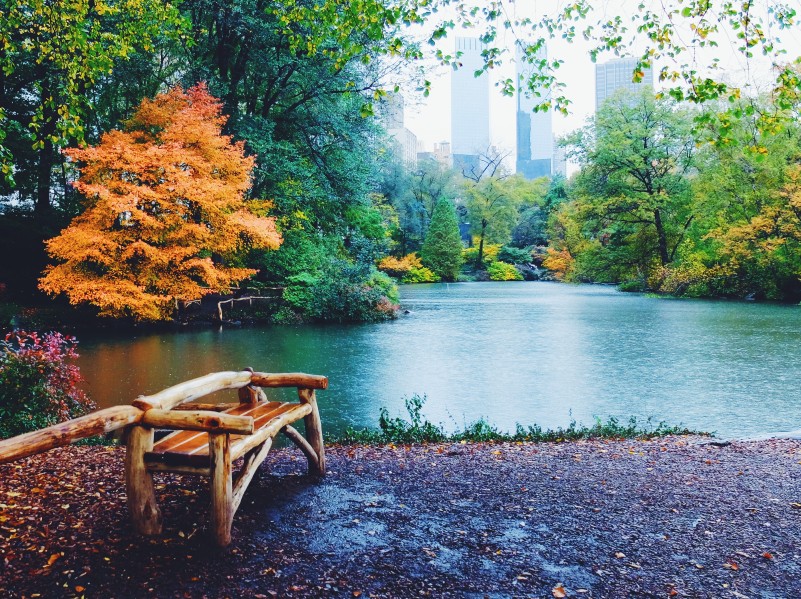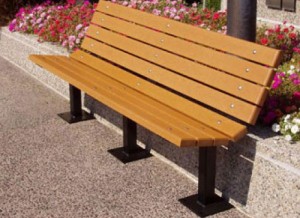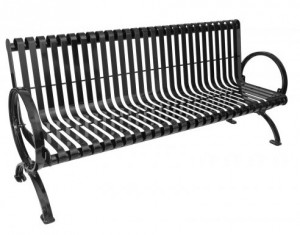 Park bench in Olmsted-designed Central Par
Park bench in Olmsted-designed Central Par
By Alysa Kleinman
Next time you visit your local park and relax on any park benches, you can thank Frederick Olmsted.
It's a name you might not immediately recognize from history class, but he's considered the father of American landscape and park design. His contributions during his lifetime spanned from Central Park to Niagara Falls, to parks in Midwestern cities like Chicago, Milwaukee and Detroit, to the U.S. Capitol, and all the way out to Stanford University in Palo Alto. His contributions beyond his lifetime are un-measurable.
Setting the bar for excellence in park design very high, Olmsted's designs for Central Park continue to influence landscape architecture to this day. But to fully understand Olmsted's impact and how he reached it, you have to hear his full career path that led to his influence over such well-known parks.
A Traveling Writer
Raised in Hartford, Connecticut by his nature-loving father John and step-mother Mary Ann Bull, Frederick eventually settled his family on a 125-acre farm on the south shore of Staten Island. He started working in journalism, which led him to Birkenhead Park in England. He also traveled the Southern states reporting for The New York Daily Times (now The New York Times).
 Park bench made with recycled plasti
Park bench made with recycled plasti
Introduced by a mutual friend to Calvert Vaux, an English architect, the two entered the Central Park design competition together by submitting the Greensward Plan. Vaux had much more design experience, but was impressed with Olmsted's connections from working as a journalist. Olmsted and Vaux were selected the winners in 1858, with before-and-after panels detailing their proposed landscape and the idea of separating pedestrian and carriage traffic as the two main concepts that set them apart from the competition.
The pair set to work designing Brooklyn's Prospect Park, Central Park, and several other projects around New York City. Olmsted later admitted that if it wasn't for Vaux, he never would have become an architect, he would have been a farmer.
An Influential Designer of Park Benches
One of Olmsted's most notable design advancements were his unique benches. With a focus on minimalist design, Frederick wanted his designs to bring out the beauty in nature, not distract from it.
"The park itself should always be uppermost in the mind of the beholder," Olmsted said. Olmsted and Vaux's first park bench was the rustic log bench, which was designed to bring nature directly to park visitors. Sitting on the rustic park benches while overlooking Central Park's careful design made guests feel like they were transported to the Adirondacks.
As Central Park grew, additional park benches were needed. Olmsted and Vaux designed the settee, which was a simple bench mass produced in hot furnaces and made of wrought iron. Committed to keeping the surroundings the focus of the park, the settee park bench was almost transparent, allowing guests to take a seat and enjoy the variety of breathtaking scenes designed by Olmsted and Vaux.
Olmsted set the stage for other influential designers like Robert Moses to create their own park benches for Central Park and beyond. His style of benches encouraged future designers to follow his lead in keeping nature the focal point of the park and avoid distracting guests with loud designs.
A Central Park Creator
It's hard to imagine what Central Park would look like today without Olmsted's influence. Olmsted and Vaux were committed to creating an English romantic pastoral landscape, perhaps inspired by Olmsted's visit to England years earlier. In the middle of bustling New York City, quiet rolling fields were probably difficult to imagine.
 Park Avenue park benc
Park Avenue park benc
But Olmsted and Vaux worked tirelessly, organizing 20,000 workers who moved almost 3 million cubic yards of soil and planted 270,000 trees and shrubs. Their intricate designs added contrast to the park, from the rustic Ramble to the formal Promenade. As always, the natural beauty was the main focus, with huge trees lining paths and park benches the entire way.
The park was an instant success with New Yorkers and was declared "the finest work of art ever executed in this country" by Harper's Magazine in 1862. Today, the park receives around 42 million visitors annually.
A Leader in New York City
Frank's partnership with Vaux, combined with the onset of the Civil War, opened many doors for Olmsted's career, as he worked and volunteered in the following positions:
- Executive Secretary, U.S. Sanitary Commission- tended to the wounded during the war, raised $1 million for the Sanitary Commission (later known as the Red Cross)
- Founding member, Union League Club of New York- helped start a major private social club
- Third Class member, Massachusetts Commandery of the Military Order- Olmsted was one of very few civilians elected to this military organization
- Manager, Rancho Las Mariposas-Mariposa- Manager of a mining estate
- Established first full-time landscape architecture firm in Brookline, MA- Now restored as the Frank Law Olmsted National Historic Site
- Served on the Board of Commissioner of the state reserve for California- Helped propose the reservation of parks like the Yosemite Valley and Mariposa Big Tree Grove.
- Founder, American Society of Landscape Architects- Olmsted advanced conservation efforts for Niagara Falls and the Adirondacks.
He also designed parks throughout the United States and came up with complex systems for connecting parks and parkways. As he served in these various positions, Olmsted embodied the ideals that he wrote about when he was traveling the American South. He wanted parks to be available equally to everyone, regardless of race or socioeconomic status. It may seem like an obvious concept through our modern lens, but it was revolutionary for his time.
A Lasting Legacy
Frederick believed that parks improve our society by building a sense of community and a gathering place for recreation. After his death, Olmsted's children continued the work at his firm, with more than 6,000 landscapes across North America designed by Olmsted and his team over the years.
Frederick Olmsted's life and legacy prove that one man can have a profound impact for years to come. From Olmsted Point in Yosemite to Olmsted Hall at the University of Hartford to the park bench at your neighborhood park that's inclusive to everyone, it's clear that Frederick Olmsted's legacy with parks and park benches will continue to be remembered for decades to come.
Note: Since 2001, The Park and Facilities Catalog has been a national manufacturer and provider of dozens of assorted park benches to parks, school, universities and other facilities.


